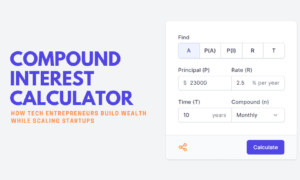In the fast-paced world of healthcare, where seamless data flow and top-notch patient care are non-negotiable, a new hero is stepping up: The Open Group Architecture Framework (TOGAF). This globally trusted enterprise architecture methodology is making waves by helping healthcare organizations tackle their toughest challenges—think fragmented systems, regulatory headaches, and the push for efficiency. And leading the charge is Dheeraj Kumar Pal, an IT veteran with over 20 years in the healthcare trenches, who’s proving TOGAF can transform the industry one integrated system at a time.
Pal, who’s worked with hospitals and health tech giants alike, knows the chaos of disconnected systems all too well. His latest brainchild? A practical, TOGAF-powered method to knit together sprawling healthcare IT landscapes. From electronic health records (EHRs) to billing platforms, Pal’s approach uses TOGAF’s Architecture Development Method (ADM) to create a single, streamlined blueprint. “It’s about cutting the clutter and putting patients first,” Pal says. His method is already turning heads for its promise to boost interoperability, slash inefficiencies, and keep healthcare providers compliant with strict rules—all while keeping the focus on better outcomes.
TOGAF’s magic lies in its step-by-step playbook. It starts with setting the stage—defining goals and governance—then maps out everything from workflows to tech infrastructure. For healthcare, that means linking EHRs with real-time diagnostics or syncing patient data across departments. The payoff? Fewer errors, lower costs, and smarter care delivery.
Pal isn’t alone in championing TOGAF. Take Mayo Clinic, a healthcare titan that’s leaned on TOGAF to unify its massive network of systems. By aligning its IT with patient care goals, Mayo has slashed data retrieval times and powered up its analytics—think faster diagnoses and personalized treatments. A 2020 study in the *Journal of Healthcare Engineering* backs this up, showing how TOGAF streamlined data integration at a large hospital system, cutting operational delays by 30%. It’s proof that TOGAF isn’t just theory—it’s a real-world game-changer.
Across the Atlantic, the UK’s National Health Service (NHS) has also tapped TOGAF to modernize its sprawling IT ecosystem. Facing pressure to digitize patient records and improve service delivery, the NHS used TOGAF to bridge legacy systems with cloud-based platforms. The result? A 25% uptick in appointment scheduling efficiency, per a 2022 NHS report, and happier patients who don’t get lost in the shuffle.
But it’s not all smooth sailing. Rolling out TOGAF can mean big upfront costs and pushback from staff used to the old ways. Pal’s fix? Start small—phase it in—and train everyone involved. “You don’t rip out the old system overnight,” he advises. “You show people how it makes their jobs easier.” That’s a lesson Cleveland Clinic learned too. When it adopted TOGAF to integrate its EHR with AI-driven tools, it paired the tech shift with hands-on workshops, easing staff into a system that now flags critical patient trends in seconds.
The buzz around TOGAF is growing because it delivers where it counts. At Kaiser Permanente, TOGAF helped merge patient data with billing, cutting claims processing time by nearly half, according to a 2021 industry case study. That’s real money saved—and more time for doctors to focus on patients, not paperwork.
Looking ahead, TOGAF could be the backbone of healthcare’s digital future. Imagine AI diagnostics tied seamlessly to EHRs, or wearable devices feeding live data to doctors—all orchestrated by TOGAF’s structured approach. Pal sees it as a no-brainer: “Healthcare’s too complex to wing it. TOGAF gives us the map.”
For an industry under pressure to innovate, TOGAF isn’t just a framework—it’s a lifeline. With trailblazers like Dheeraj Kumar Pal and heavyweights like Mayo and the NHS showing the way, it’s clear: TOGAF is rewriting the rules of healthcare IT, one connected system at a time.



































